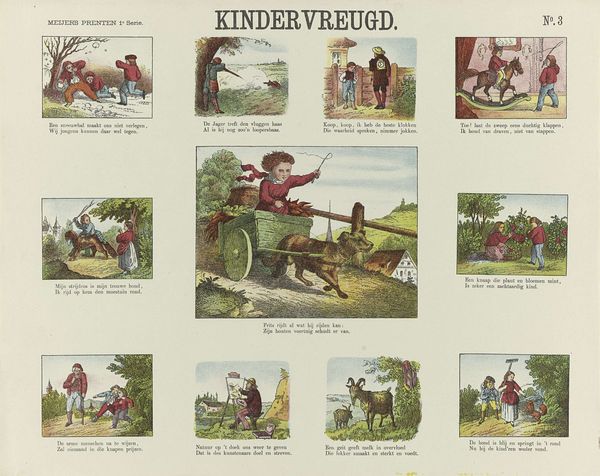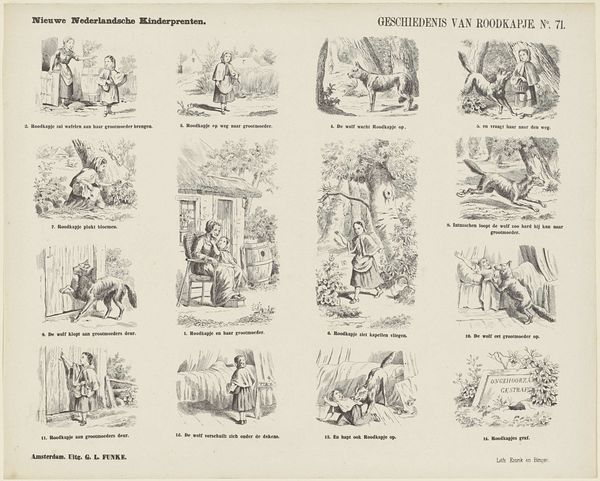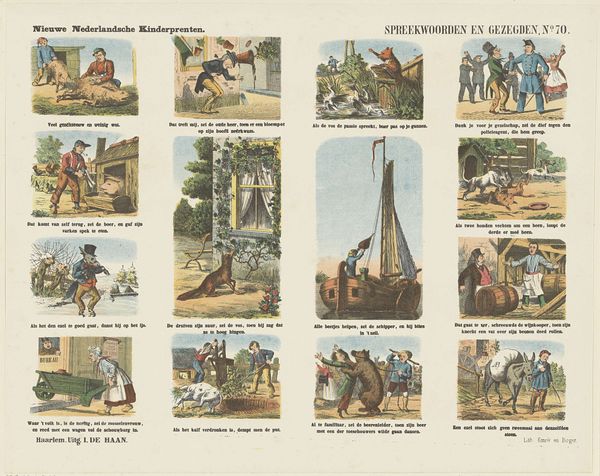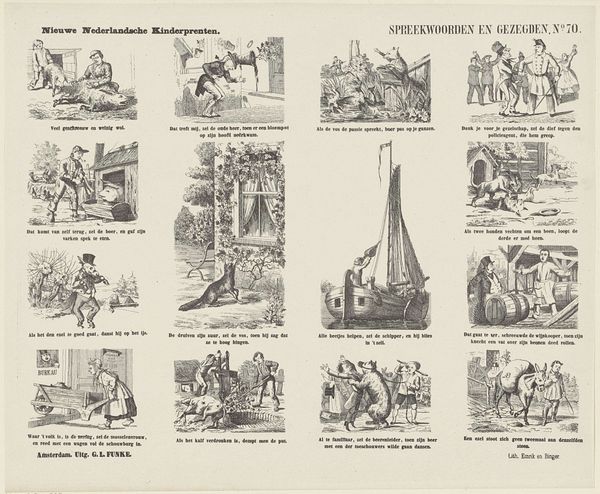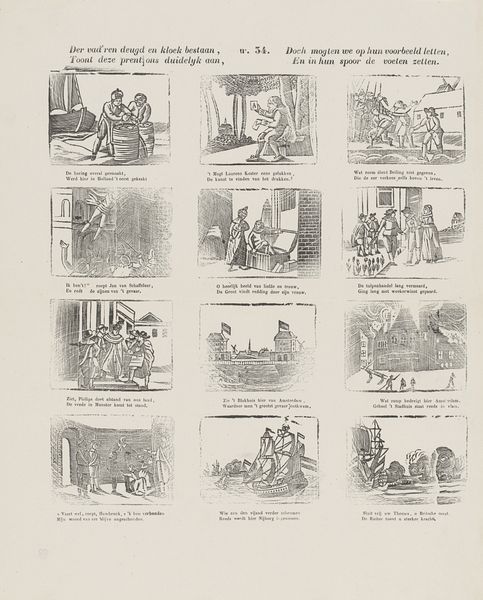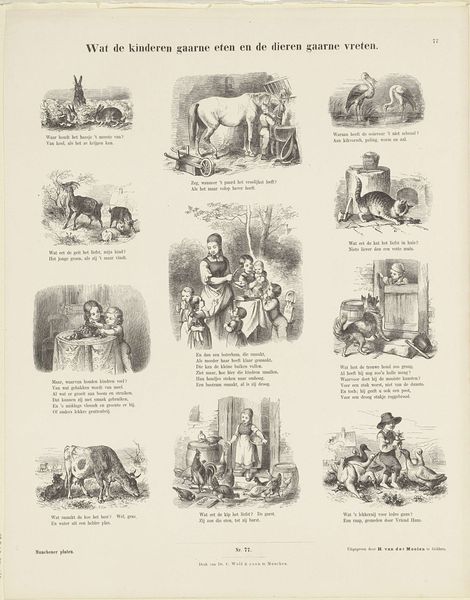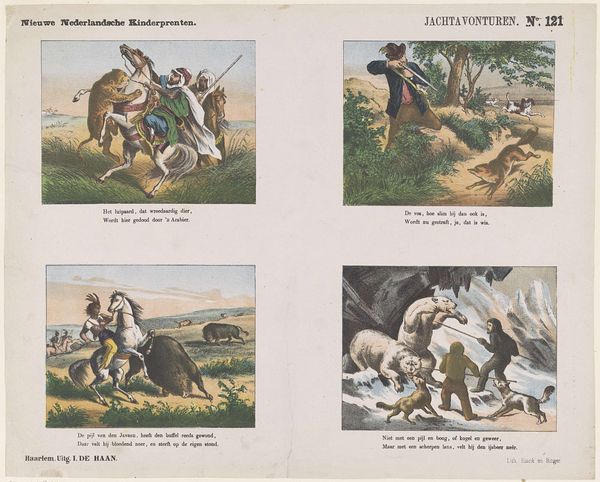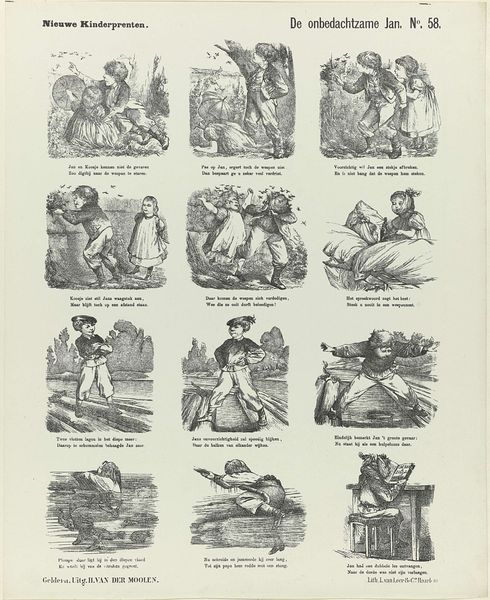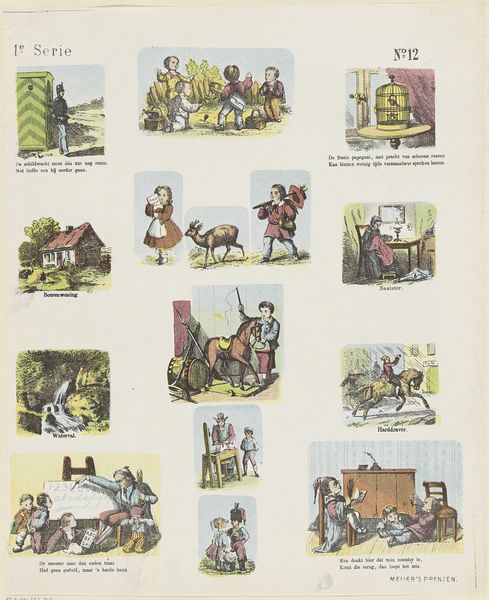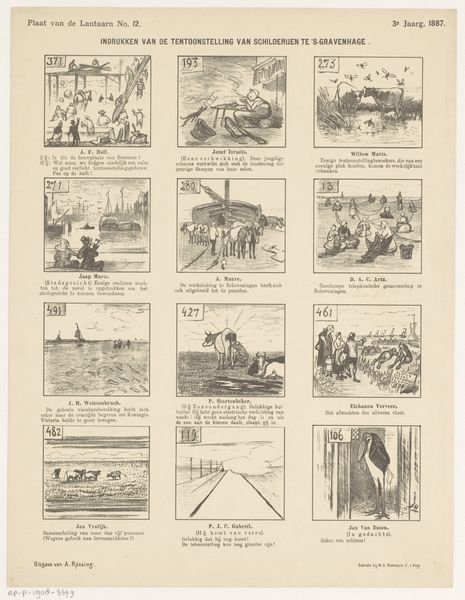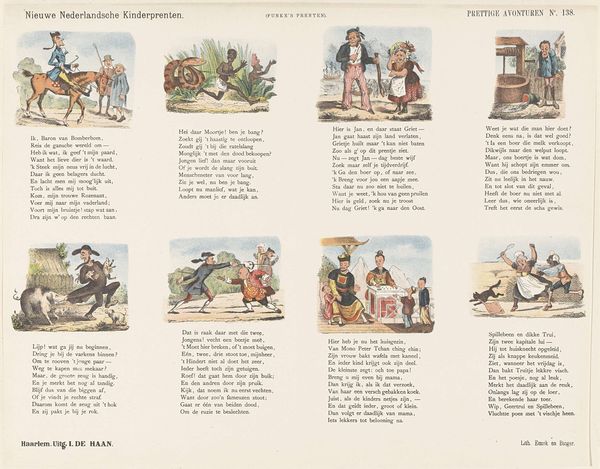
print, engraving
#
narrative-art
# print
#
folk-art
#
comic
#
genre-painting
#
engraving
Dimensions: height 343 mm, width 427 mm
Copyright: Rijks Museum: Open Domain
Curator: Let’s delve into this engraving, “Kindervreugd,” dating back to 1873 by De Ruyter & Meijer. It’s quite the narrative tapestry. What are your initial thoughts? Editor: It feels a bit like a vintage comic strip, with all these little vignettes. Some of them seem… chaotic? What do you see in this piece beyond just childhood scenes? Curator: Indeed! These scenes, seemingly simple, are embedded within complex social and political contexts. “Kindervreugd,” which translates to "Children's Joy," on the surface depicts childhood innocence, but I'd ask you to look closer: How does the representation of labour, and even a somewhat violent relationship with animals – depicted in some frames of children playing – challenge the idyllic vision of childhood so prevalent in art at that time? Editor: That's a good point, I hadn't considered the power dynamics at play. Especially that scene where a child appears to be whipping a dog pulling a cart. It’s unsettling when viewed through that lens. Does this connect to broader discussions around labour and childhood at that time? Curator: Precisely! The image provides commentary on how the construct of childhood innocence could be used to obscure the realities of working-class children and their interactions with society. Editor: I guess it’s less about pure "joy" and more about the complex lived experiences of children, isn't it? It’s so interesting to consider that contrast – what was expected of childhood versus the reality. Curator: Exactly. I would posit this engraves prompts us to interrogate what joy, in the name of ‘play’, looks like to differently situated people at the time, and now. It is so easy to simply assume what constitutes child’s play; in truth, as we observe here, its interpretation is fraught with difference, cultural background and history. Editor: I’ll never look at a simple children’s scene the same way again! Thanks, this was incredibly enlightening. Curator: And for me as well! The process of collective interrogation can also affect our own interpretative strategies, bringing more awareness on possible meanings.
Comments
No comments
Be the first to comment and join the conversation on the ultimate creative platform.
